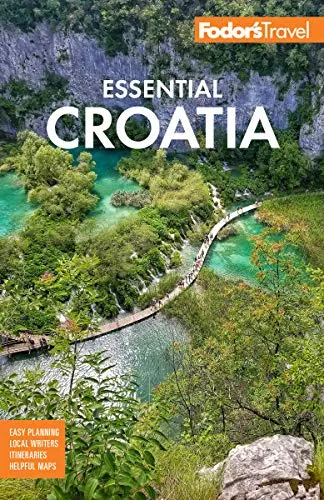Istria
Istria
Discover a thousand years of rich Istrian history in the hilltop fortresses, early Christian churches, Byzantine mosaics, and Baroque palaces of the region, and treat your taste buds to local specialties: white and black truffles (a series of festivals is dedicated to them), olive oil (many of the world's best), and wine (crisp, fruity white Istarska Malvazija and light, harmonious red Teran).
Explore a remarkable 1,900-year-old Roman amphitheater in Pula. Visit Pore? and Rovinj, Croatia's two most popular seaside resorts, with Venetian-style campanili, loggias, and narrow stone streets.
The word conjures something magical as it rolls off the tongue: Istria. Beyond sounding poetic, however, the name of this region of Croatia is derived from the name of the Illyrian p...
Read MoreDiscover a thousand years of rich Istrian history in the hilltop fortresses, early Christian churches, Byzantine mosaics, and Baroque palaces of the region, and treat your taste buds to local specialties: white and black truffles (a series of festivals is dedicated to them), olive oil (many of the world's best), and wine (crisp, fruity white Istarska Malvazija and light, harmonious red Teran).
Explore a remarkable 1,900-year-old Roman amphitheater in Pula. Visit Pore? and Rovinj, Croatia's two most popular seaside resorts, with Venetian-style campanili, loggias, and narrow stone streets.
The word conjures something magical as it rolls off the tongue: Istria. Beyond sounding poetic, however, the name of this region of Croatia is derived from the name of the Illyrian people who occupied the area well before the Romans first arrived in the 3rd century BC—namely, the Istrians, whose chief architectural legacy comprised numerous hilltop fortresses. In the northwest corner of Croatia bordering Slovenia, the triangular-shape Istrian peninsula looks rather like a bunch of grapes—a happy coincidence, given its strong viticultural heritage.
Much of Europe's history has passed through Istria for more than a thousand years, not least the history associated with three great civilizations—the Roman, Germanic, and Slavic. Centuries of Venetian rule, later reinforced by years of Italian occupation between the world wars, have left a sizable Italian minority here, and Italian influence is apparent in the architecture, cuisine, and local dialect. Here, even the effects of the concrete-box style of communist-era architecture seem relatively minimal compared to the overall sense of a much deeper past suggested by the rich mix of architectural styles—from a whole array of well-preserved Roman ruins to Romanesque basilicas; as well as breathtakingly well-preserved medieval towns, bell towers, fortifed town walls, Baroque palaces, and Austro-Hungarian battlements.
The region's principal city and port, Pula, is on the southern tip of the peninsula and is best known for its remarkably preserved 1,900-year-old Roman amphitheater and Forum as well as the Triumphal Arch of the Sergians. Close by, the beautifully nurtured island retreat of Brijuni National Park can be visited in a day. Towns along the west coast have an unmistakable Venetian flavor left by more than 500 years of Venetian rule. Pore? and Rovinj, Croatia's two most popular seaside resorts, are both endowed with graceful bell towers and reliefs of the winged Lion of St. Mark, patron saint of Venice. The effects of package tourism have long encroached—to varying degrees—on the outskirts of various Istrian towns, most notably Pore? and Vrsar. . Rovinj, though likewise brimming with tourists in high season, retains more of its ravishing historic beauty and redolence than almost any other town in Croatia. A side trip to the romantic hilltop towns of Motovun, Oprtalj and Grožnjan will prove unforgettable, whether as a brief excursion from the sea in the warmer months or as a more substantial autumn journey. This inland area is particularly rich in truffles, mushrooms, grapes, and chestnuts and from mid-September to late October these local delicacies are celebrated with a series of gastronomic festivals.
Recommended Fodor’s Video
Hotels
Things to Do
Things to Do
Explore Things to Do
Find the perfect tours and activities in Istria.
Where to Eat
Where to Eat
Need to Know
Need to Know
Language
CroatianNearby Airports
PUYElectrical Outlets
200v/50 cycles; electrical plugs have two round prongsCurrency
Kuna (Kn.)Language
CroatianElectrical Outlets
200v/50 cycles; electrical plugs have two round prongsCurrency
Kuna (Kn.)Nearby Airports
PUYNeighborhood Guides
Discover the best neighborhoods in Istria with curated recommendations from our editors.
essentials
transportation
resources
Neighborhood Guides
Discover the best neighborhoods in Istria with curated recommendations from our editors.
Neighborhood Guides
Discover the best neighborhoods in Istria with curated recommendations from our editors.
essentials
transportation
resources
Articles
Articles See All
Guidebooks
Guidebooks
Our worldwide travel correspondents bring you the best and most up-to-date coverage of over 7,500 global destinations.
Shop NowFodor's Essential Croatia: with Montenegro & Slovenia
Whether you want to explore Dubrovnik’s Old Town, go sailing in Split, or drink wine...














